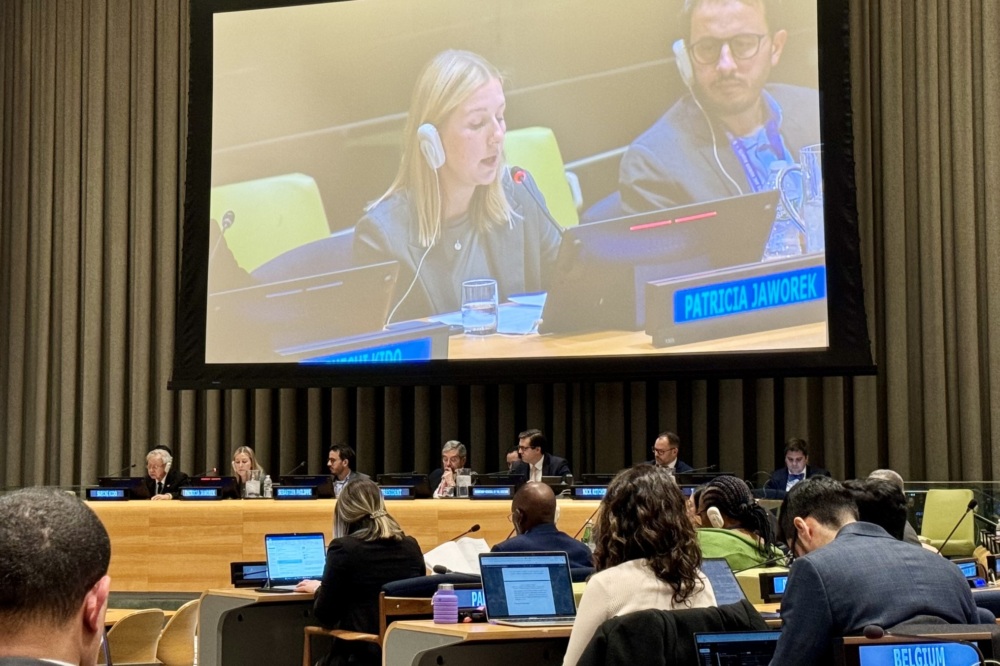On April 2, the EU High Representative and Iranian Foreign Minister issued a Joint Statement highlighting an agreement on the key “Parameters of a Joint Comprehensive Plan of Action (JCPOA) regarding the Islamic Republic of Iran’s Nuclear Program.” Both the statement and JCPOA reflect many years of effort by the delegations involved in the P5+1 process; the parameters announced are the most detailed to date and will now be used to develop a final JCPOA text and annexes by June 30.
As I view it, the most important strategic goals with respect to Iran’s nuclear program are: (1) to prevent Iran from building a nuclear weapon, which would destabilize the entire Middle East and present a direct threat to the United States and our allies and friends in the region, and indeed to the world, and (2) to achieve this goal, if possible, without a war, which would have extremely serious consequences.
The key parameters outlined in the JCPOA are a first crucial step toward a final agreement in June that must allow the United States, our sanctions allies and the international community to effectively and verifiably inhibit Iran from building a nuclear bomb. However, there is a long way to go before a final agreement, and there remain many questions to answer and gaps to fill.
The most important questions: Will the final agreement ensure that Iran cannot produce the highly enriched uranium or plutonium necessary to build a nuclear weapon? And will it include procedures and safeguards that provide enough early warning of any future Iranian cheating or misconduct to take decisive action to prevent it?
While crucial details must be worked out over the next three months, Congress and the American people should establish a realistic baseline for assessing this possible agreement, understanding that it will not halt all Iranian civil nuclear activities.
The 2007 National Intelligence Estimate by the U.S. intelligence community concluded that, “Iran has the scientific, technical and industrial capacity eventually to produce nuclear weapons, if it decides to do so.” Today, by some estimates, Iran could possibly produce enough highly enriched uranium for one bomb in two to three months. We are not starting from scratch; indeed, the Iranian nuclear program started under the Shah of Iran many decades ago. Iran has a history of relentlessly crossing red lines declared by several U.S. administrations and our allies in the region—and of violating U.N. resolutions.
Looking ahead, it is imperative to keep the international coalition together as it works to conclude the details of a final agreement and beyond. The coalition must ensure the agreement’s effective implementation over many years, if we are to have any hope of preventing Iran from obtaining nuclear weapons without going to war. Sanctions have been the essential lever in getting Iran to the negotiating table. Effective sanctions and future actions require close cooperation with our allies and negotiating partners, including on verification procedures and enforcement.
The agreement contemplates a range of unprecedented verification and transparency measures, which, if implemented, could constitute a new and strengthened baseline for ensuring that the global nuclear enterprise is dedicated to peaceful uses.
With so much at stake for our nation and the world, the President and Congressional leaders from both parties must communicate in good faith and keep in mind that America’s strength and influence require a unity of purpose and demonstration of resolve. We should have common goals: to preclude Iran from building a nuclear weapon, to do so without a military conflict, and to stay united with our allies and sanctions partners.
Finally, if a final agreement is reached this summer, it must be sustained through successor administrations. This requires Congress and the American people to ask the hard questions now, including but not limited to the following:
-
Will a final agreement with strict verification—including monitoring of Iran’s existing nuclear infrastructure and the inspection of suspect sites—extend the timeline that it would take Iran to produce enough nuclear material to make a bomb, and by how much?
-
What happens to nuclear material currently held by Iran that could be used to manufacture a nuclear bomb? What is the extent of any remaining nuclear infrastructure for the production of civilian nuclear power in Iran? What are the provisions relating to research and development of advanced centrifuges? What provisions are agreed to monitor this nuclear infrastructure and address any other suspicious Iranian activity?
-
What is the intelligence community’s assessment of its ability to monitor the agreement? Will we know more about what is happening in Iran with an agreement than without it?
-
Will the agreement help to provide reassurance to nations in the region who have serious security concerns, in light of Iran’s remaining nuclear program and capabilities?
-
Recognizing that other non-nuclear related sanctions are to remain in place, how does a potential final agreement fit with broader strategies to restore stability and order to the Middle East?
-
Without an agreement, will Iran sustain the status quo, or will it press forward with its nuclear activities?
-
If the parties do not come to a final agreement or if Iran breaches an agreement, what is our military assessment of the potential for a prolonged and costly regional conflict?
-
If the United States is perceived by our international negotiating partners as having undercut the chances for an agreement, will there be support for additional international sanctions or even for maintaining the current sanctions regime?
As the co-chairman of an organization devoted to reducing nuclear threats, I believe the final agreement must be judged on the basis of whether it is a solid barrier to the further proliferation of nuclear weapons in the Middle East and globally.




